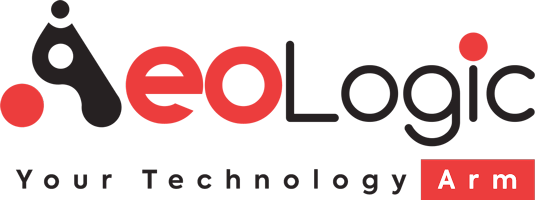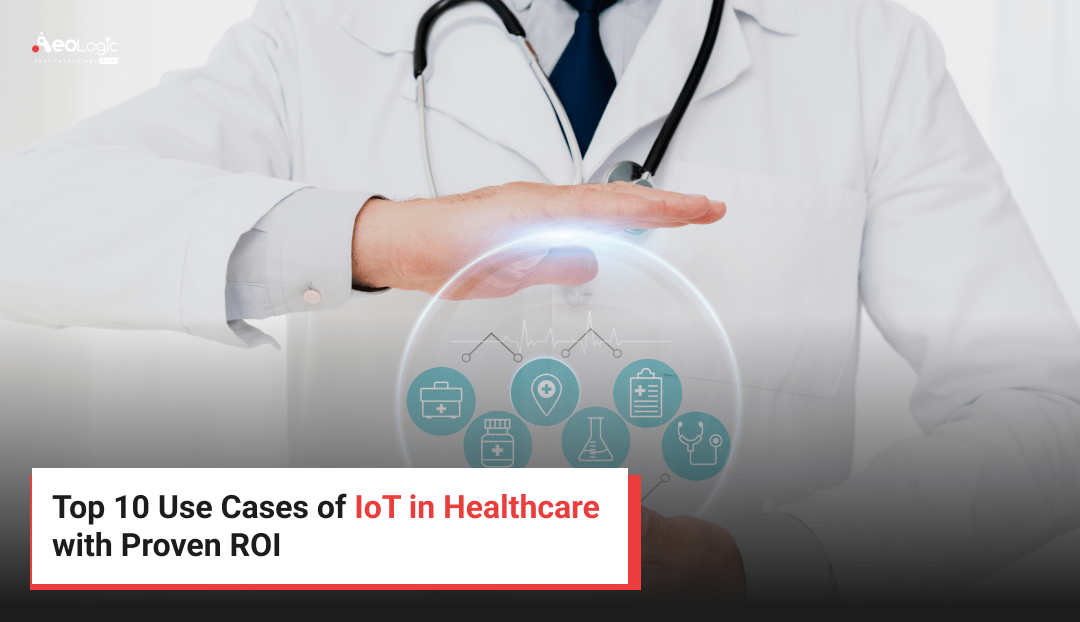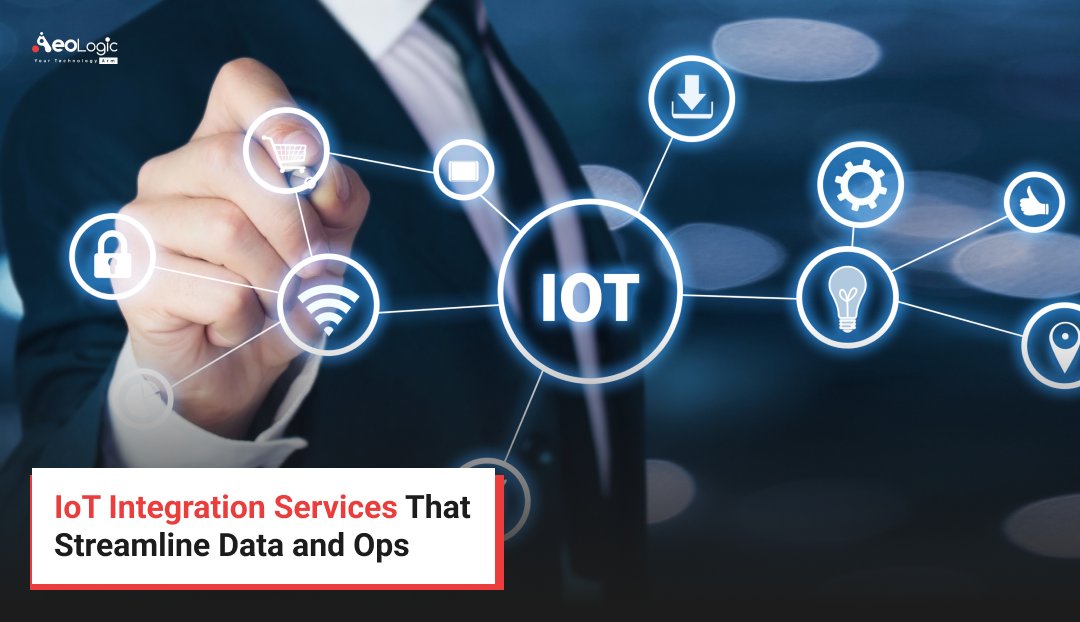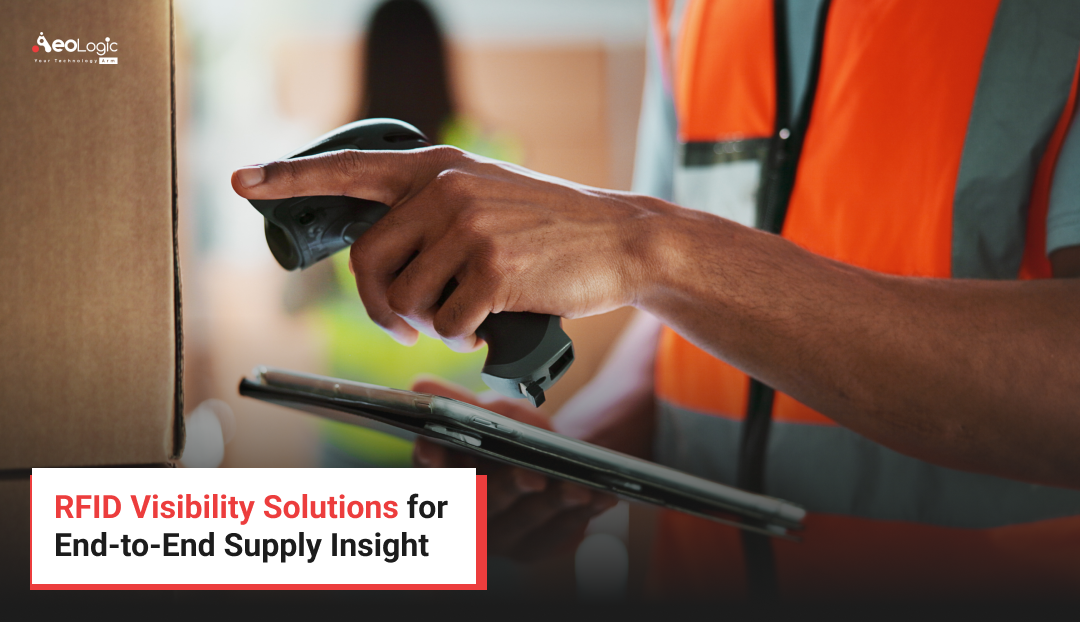IoT solutions have expanded their applications, use cases, and benefits for every sector, and healthcare is one of the important sectors among all that have been fortunate with this technology. The healthcare sector is a sensitive sector that deals with the lives of patients, and IoT definitely provides solutions that are not just lifesavers but also provide various other benefits that never could have happened without it.
However, there are a few healthcare organizations that are not aware of this technology and its use cases. They are afraid to invest in the IoT as they fear a bad return on investment. So, to make every healthcare organization aware and dispel their fear, we are going to provide a brief overview of the top use cases of IoT in healthcare with the proven return on investment.
Across a range of applications, IoT in healthcare provides substantial advantages and a favorable return on investment (ROI). IoT solutions, such as population monitoring for clinical trials, supply chain management, and inpatient monitoring, have shown a high return on investment for numerous enterprises. These technologies are a vital component of contemporary healthcare because they can lower expenses, increase operational effectiveness, and improve patient care. Companies like Aeologic are already helping providers transform operations with solutions designed for measurable impact.
IoT in healthcare presents an alluring chance to raise operational effectiveness, lower expenses, and improve patient care, all of which will yield a substantial return on investment for healthcare institutions.
Let’s look closely at the systems that are already delivering value, and where your organization should be investing next.
The Rapid Growth of IoT in the Healthcare Industry
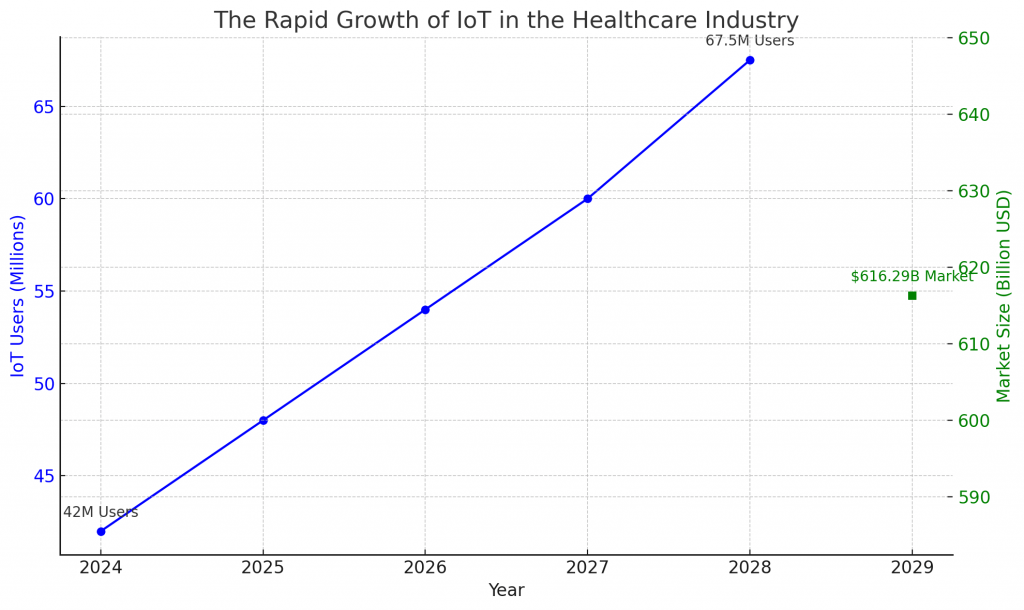
The Internet of Things (IoT) in healthcare market is expected to see exponential growth in the next few years. It will grow to $616.29 billion in 2029 at a compound annual growth rate (CAGR) of 21.6%. There were over 42 million global users of healthcare IoT in 2024, with projections to reach around 67.5 million by 2028.
IoT in healthcare offers various benefits, including reduced hospital readmission rates by up to 25%, improved patient care, and enhanced operational efficiency.
From wearable health monitors to smart hospital systems, IoT is enabling better decisions, faster care, and a higher standard of treatment across the healthcare ecosystem.
Explore more: The Benfits of IoT Solutions in Healthcare Industry
What Is IoT In Healthcare?
IoT is the expansion of a network of devices over the internet that can be used to monitor, collect data, detect, etc. IoT in medicine or healthcare refers to the IoMT that enhances the medical devices and implements various solutions to enhance patient treatment, administrative workflow, and much more by real-time collecting data for healthcare operations.
IoT in healthcare has developed various key aspects like remote patient monitoring, wearable devices, advanced diagnostics, telemedicine, personalized treatment plans, administrative scheduling, and automation. The IoT in healthcare is just like the evolution that was much needed for a long time, and this technology has provided much more than sufficient for healthcare.
Also Read: IoT in Remote Patient Monitoring: Benefits and Challenges
Top 10 Use Cases of IoT In Healthcare With Proven ROI
There are various use cases of IoT in healthcare that assure that the return on investment will be best. Here are the top 10 use cases of IoT in healthcare with proven ROI.
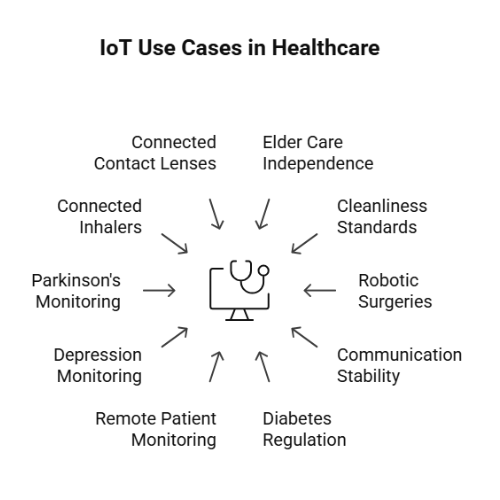
Elder Care Independence
Elderly patients are too sensitive as they can require treatment at any time, which makes them stay in the hospital for most of the period in their last stage of life. But with the IoT, they can independently spend time with their loved ones as the IoT-powered wearable device solutions remotely and efficiently monitor them. Any abnormalities or falls are detected, immediately trigger a warning to take treatment.
And the outcomes are really obvious. Not because incidents stopped happening, but rather because reactions grew faster and more informed, assisted living institutions implementing IoT-based elder care have reported a 32% drop in emergency interventions.
Beyond healthcare events, these devices enable emotional freedom. Many elders find the confidence to live free from continual physical surveillance, knowing someone is always watching over them without becoming invasive.
Maintaining Cleanliness Standards
Cleanliness is a necessary aspect in the healthcare organization, as any careless handling results in an increase of infection for the patient as well as for the staff members. The IoT-powered solutions can detect any type of bacterial spread, sanitary changes reminders, and help staff members to take action immediately. The cleaner the environment, the healthier patients and staff members will be.
Hospitals that adopt these systems have seen meaningful returns, not just in reduced infection rates but in regulatory compliance and operational efficiency. One study reported that infection-related penalties dropped by over 22% in hospitals using IoT hygiene monitoring, directly protecting both patients and revenue.
Cleanliness is not just about reputation. It’s a measurable factor in patient safety, and IoT is the first scalable tool to guarantee it’s upheld without burning out the workforce.
Robotic Surgeries
Surgeries can be aspects that should be enhanced, as conventional surgical methods involve pain, incisions, etc. IoT devices and solutions can enable robotic surgeries in a better way than ever before. Robotic surgeries have less pain and smaller incisions and provide faster healing time for the patients. The IoT devices have a great sensing ability that continuously senses the patient’s condition during the surgery to provide the best and most careful treatment.
According to hospitals that use robotic surgery, complications after surgery have gone down by 21%. Patients normally recover faster, which means lower costs per case and faster bed turnover.
This is happening now in surgery centres with a lot of patients who know that accuracy pays off. It’s not something out of this world. It’s not just the level of care that gets better with robotic surgery powered by IoT. It makes scaling easier and improves the reliability and efficiency of results.
Communication Stability
Healthcare organizations involve various departments that need to flow information and communication smoothly, faster, and with stability. The IoT integration with the healthcare system collects more precise data and delivers it to every department, and creates a network of connections in which everyone communicates with each other. The faster and stable the communication, the better decision-making is possible.
Facilities that implemented smart communication layers saw a 27% reduction in treatment delays, allowing them to move faster and treat more patients without adding staff.
In a space where seconds matter, communication stability isn’t a bonus. It’s a mandate. And IoT delivers it through automation that never misses a message.
Also Read: Advantages and Disadvantages of IoT in Healthcare
Improved Regulation of Diabetes
Diabetes patients are increasing every day, and it is not a normal condition for anyone who needs to improve their regulation. The IoT-powered system can detect or monitor the sugar level in the blood of the patients and deliver insulin according to the condition. The IoT system can also schedule the manual insulin injection time for the patients, which enables an accurate time and amount of insulin delivery for diabetes regulation.
And there’s no doubt about the ROI. IoT-driven diabetes care programs have cut down on severe hypoglycemia events by up to 30% in clinics that use them. This has cut down on emergency room visits, improved long-term results, and made patients happier.
It’s not about giving out more instructions. It’s about giving better ones based on what’s really going on in the patient’s life.
Remote Patient Monitoring
Remote patient monitoring is one of the most important use cases of IoT in healthcare. The healthcare organization keeps an eye on patient health, such as heart rate monitoring, sugar level monitoring, calories burned, water intake, and any abnormal behavior, with the help of IoT-powered wearable devices like smartwatches, fitness bands. This is also an affordable way to monitor health anywhere, anytime.
The ROI is Remote patient monitoring, in particular for chronic patients, has been shown to reduce hospital readmissions by up to 38%. Along with shorter hospital stays and fewer emergencies, this means better overall patient health and satisfaction.
When connected care extends beyond the hospital walls, it improves outcomes while lowering costs. IoT in Healthcare has progressed from theory to undeniable utility here.
Depression Or Mood Monitoring
Depression is one of the most important reasons for suicide; it can affect the mood of the patient. The IoT cannot directly understand the mood of a patient, but it can monitor various aspects like environmental conditions, blood pressure, heart rate, and biometric data, which can give an idea about the patient’s mood. These data can be used to detect the mood to save them from taking any wrong action.
The ROI in this space is less about dollars saved immediately and more about crises avoided, productivity preserved, and suffering prevented. Organizations using mood-tracking wearables report significant drops in emergency mental health interventions and therapy dropout rates.
By turning subjective experiences into measurable signals, IoT is helping mental health care finally catch up with the rest of medicine.
Parkinson’s Disease Monitoring
The treatment of Parkinson’s disease patients is one unexpected application of IoT technology in healthcare. These medical gadgets are able to monitor Parkinson’s disease symptoms and how their intensity changes throughout the day. This is a serious disease that should be cured and monitored every time. The IoT devices and solutions send patient data to the healthcare industry, as they can take action as soon as possible.
Early study shows that patients who are connected to IoT systems have more stable motor performance and a higher drug response rate. This means that they don’t need to go to the hospital as often, and their quality of life improves over time.
Connected Inhalers
Asthma and COPD are major causes of death, as two out of every three asthma patients die due to poor treatment. Patients cannot take timely treatment and precautions on their own. The IoT-powered inhalers can connect to the patient’s phone to timely indicate how to take the inhalers and also provide the right amount and way to take the inhalers. This could be a really important use case of IoT in healthcare that saves a lot of lives for patients.
Connected Contact Lenses
The human eye gradually weakens, and there is no early indication of it. This is also very hard to monitor eye issues in the early stages. The IoT-powered connected contact lenses can monitor the eye condition from very close and also monitor the surrounding conditions. This helps to detect any sensitive issues in the eyes very early and enables prevention and treatment to avoid any type of problem.
This kind of passive, precision monitoring is the future of nonintrusive diagnostics. It’s not just about improving outcomes—it’s about making life easier for patients who already have enough to manage.
As these lenses move from prototype to clinic, their promise is clear: smarter data, earlier action, and care that adapts to you without asking anything in return.
How much does IoT Solutions in Healthcare Cost?
A basic IoT healthcare app with essential features could cost anywhere from $8,000 to $15,000. This would include functionalities like data collection from IoT devices, patient monitoring, basic analytics, and secure data storage.
Complex applications with advanced features like real-time data analysis, machine learning integration, custom IoT device integration, HIPAA compliance, and a user-friendly interface could cost upwards of $25,000 or even more. This application, which uses IoT devices to track patient vitals and other health data, can have development costs ranging from $10,000 to $70,000, depending on the features and complexity.
Using IoT sensors to track the location of medical equipment and supplies can cost anywhere from $20,000 to $80,000, depending on the scale and complexity of the implementation. Smart inhalers which use IoT technology to monitor medication adherence and deliver medication, can cost between $10,000 and $25,000 to develop.
Also Read: Future of Patient Care With IoT Healthcare Solutions
Why Security Matters for IoT in Healthcare
To make the most of IoT in healthcare, major security challenges must be solved.
Most importantly, people who make, manage, or work with IoT devices must make sure that the data those devices receive is kept safe. A lot of the information that medical devices gather is considered protected health information under HIPAA and other laws that are similar. So, if they aren’t properly protected, IoT gadgets could be used as entry points to steal private information. On the contrary, 82% of healthcare organisations say that their IoT gadgets have been attacked.
One way to deal with this problem is to make IoT gear and software more secure. However, it’s also important to make sure that IoT devices used in healthcare are handled correctly so that data from devices that aren’t being watched doesn’t get into the wrong hands. Attackers might be able to get into a network or steal protected health information from a patient tracking device that has an older version of software or firmware or that is not properly turned off when it is no longer needed.
A healthcare provider can help protect against this risk by making sure that all IoT devices on their network are properly found and categorised. Once IoT device networks are properly identified, categorised, controlled, and protected, managers can watch how devices behave to spot oddities, do risk assessments, and separate mission-critical devices from vulnerable ones.
Also Read: How IoT Solutions Drive Innovation Across Industries
Final Take
Definitely, IoT in healthcare has a promising future. According to Goldman Sachs, IoT in healthcare will soon save $300 billion. Remote patient monitoring (RPM) combined with electronic health records (EHR) would save $700 billion in the healthcare business over the next 15-20 years, according to the National Broadband Plan.
Additionally, it is anticipated that IoT-related healthcare sales will reach over $135 billion by 2025. Opportunities will continue to be created by technological advancements, and the IoT industry’s phenomenal development is not slowing down. It will be fascinating to observe how the industry develops and also see its impact on the healthcare industry.
As a top app development firm, Aeologic is ready to help you create an innovative healthcare system. We specialize in creating unique Internet of Things programs that are suited to specific requirements, employing the best IoT frameworks. We are ready to learn more about your company and contribute to meeting your needs.

I’m Deepika Pandey, an SEO strategist and content writer with 6+ years of experience. I create SEO-friendly content that drives traffic and engages readers. I combine data insights with creativity to help businesses grow their online presence effectively.
